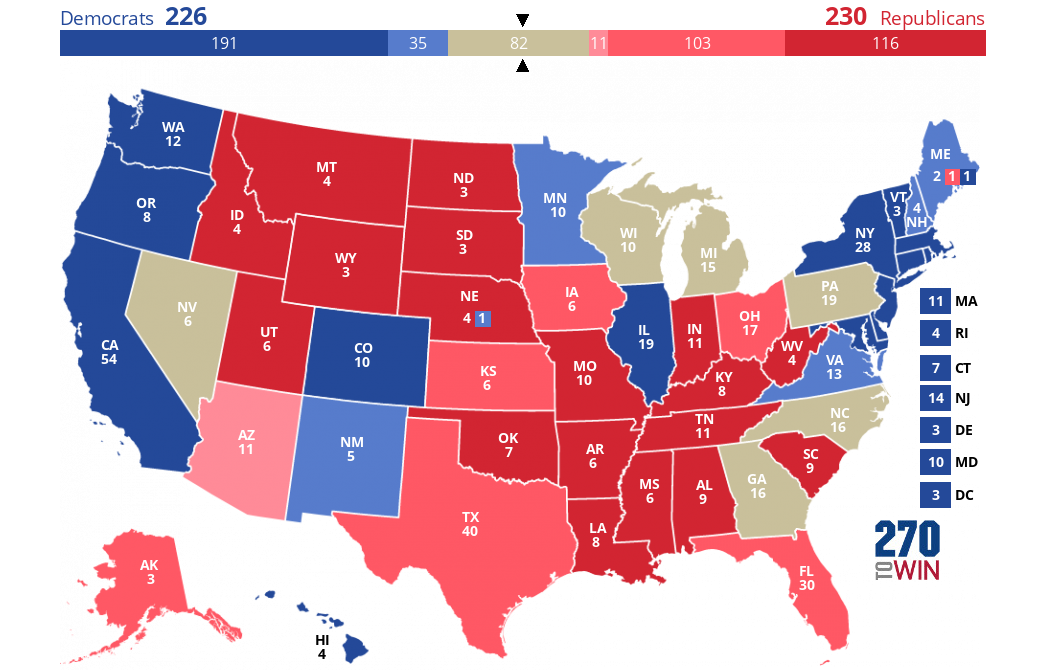Electoral College Ties
This article has been updated for 2024
The discussion on this page is mostly written around a 269-269 tie between two candidates. However, much of the same would come into play if a third party or independent candidate wins enough electoral votes to prevent any candidate in the race from reaching the required 270 electoral vote threshold. The 2024 interactive electoral college map allows you to assign electoral votes to a 3rd party.
Game it out: Electoral College Tie Finder 2024 Interactive Map
It takes 270toWin. If neither candidate gets a majority of the 538 electoral votes, the election for President is decided in the House of Representatives, with each state delegation having one vote. A majority of states (26) is needed to win. Senators would elect the Vice-President, with each Senator having a vote. A majority of Senators (51) is needed to win.
State House delegations can cast their vote for president from among the three candidates receiving the most electoral votes, while Senators are limited to the top two candidates in their vote for Vice-President.
It is important to note that an apparent tie when all the states are called does not mean that there is actually a tie. The Electors meet on December 17, 2024 (the first Tuesday after the second Wednesday in December) to cast their votes.1 1Previously, this was the first Monday after the second Wednesday. The new date is specified in the Electoral Count Reform Act of 2022. Only about half the states have laws requiring their Electors to vote for the popular vote winner.
It is possible that an Elector could cast his or her vote for another person. We saw that in the 2016 election, when seven Electors were 'faithless'.2 2This was a historically high number, most elections have none. In a 269-269 tie, as long as a rogue vote wasn’t for the other major candidate in the race, this wouldn’t be an issue. Both candidates would still be short of the required 270.
More than likely, the tie election would remain undecided after the Electors voted. The Congress meets in joint session on January 6, 2025 to count the electoral votes.3 3Congress can vote to change this date. Note that this count happens whether the election is close or a landslide. If no candidate has reached 270 Electoral Votes, then the House and Senate take over and elect the President and Vice-President, respectively.
Who would win the presidency in a tie?
In this partisan era, it is a reasonable assumption - at least to start - that the vast majority of members would vote along party lines.
As of late September, 2023, Republicans hold a 26-22 edge in House delegations. Two states, Minnesota and North Carolina, are evenly split. See the image below.
However, it is the members of Congress elected in November, 2024, and seated in January, 2025 that would take on this responsibility.
To help you monitor the House delegation split for January, 2025, we have an interactive feature called State View that is associated with the House Interactive Map.
Check it out for the 2024 House Election Consensus Forecast.

Note that if a majority is not reached in the House vote (e.g., 25-25), that chamber needs to keep at it until the tie is broken. If the deadlock is still in place when the new term starts (noon, ET on Jan. 20), the vice president becomes acting president until such time as the House elects a president.4 4See Section 3 of the 20th Amendment.

